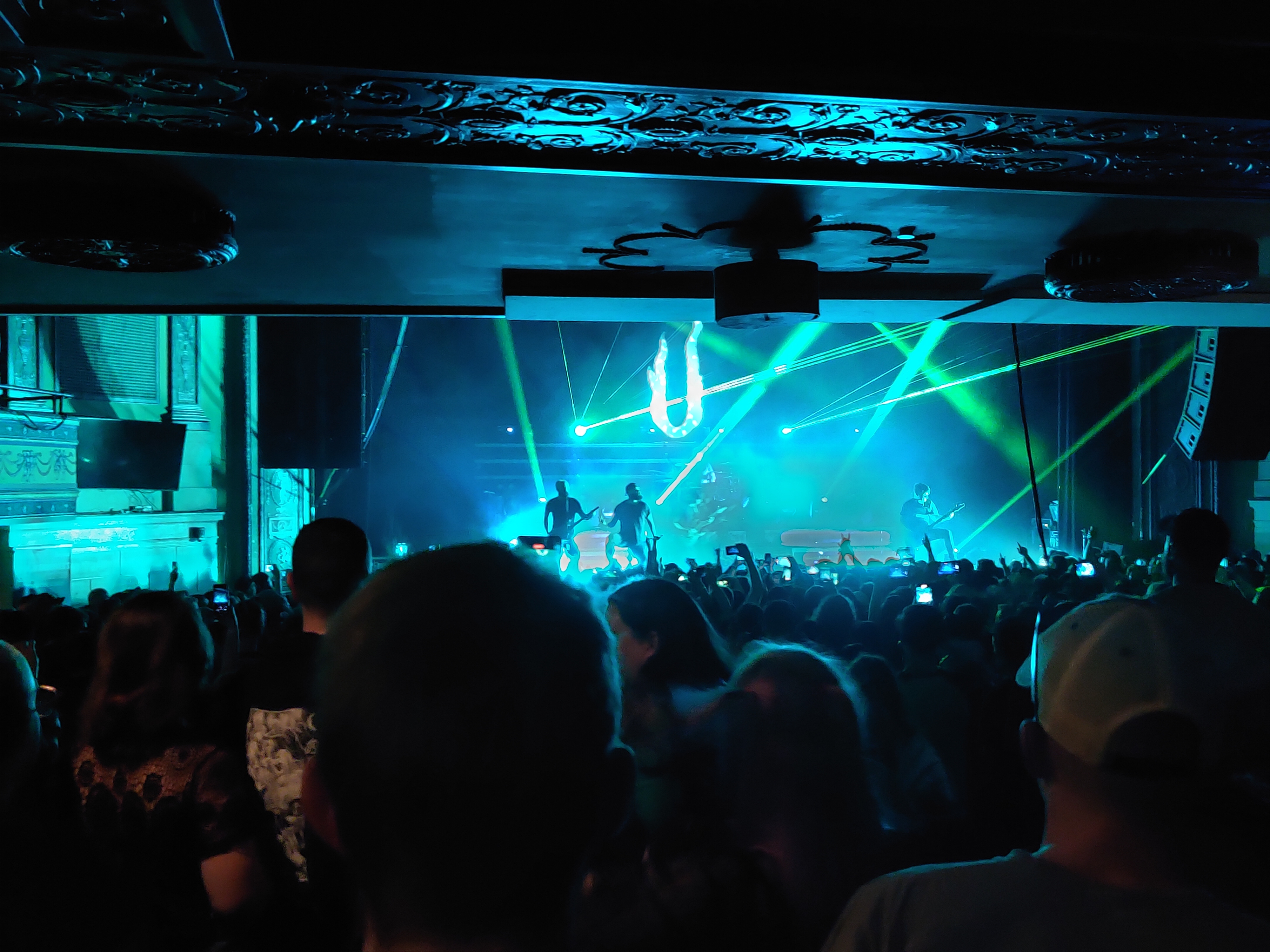https://ghostarchive.org/archive/S3pA5
The 40,000-person facility – thought to be the largest in the Americas – opened earlier this year
Up to 75 inmates live in each cell of about 1,000 square feet, sharing two toilets and sinks
Salvadoran President Nayib Bukele’s relentless war on gangs is steadily filling the cellblocks of a massive prison that may be Latin America’s largest.
At the complex in Tecoluca, southeast of the capital San Salvador, dozens of inmates with shaved heads peer out of a single cellblock.
Standing out among the omnipresent white T-shirts and shorts are some heads and necks covered in dark tattoos.
Agence France-Presse joined government human rights officials this week in a rare tour of the prison, formally known as the Terrorism Confinement Centre, almost exactly six months after its inauguration on February 24
The massive prison has a capacity for 40,000 inmates, but now holds 12,114 accused gang members.
“We are persevering here day by day, trying to change with the help of our God,” Jose Hurquilla Bonilla, a member of the Barrio 18 gang, said from inside a cell.
Humanitarian organisations have questioned the treatment of alleged gang members. The UN denounced that among the tens of thousands of detainees across the nation’s prisons there are at least 1,600 minors.
The prison was built to hold some of the more than 72,000 alleged gang members detained under an emergency regime decreed in March 2022 by Congress at Bukele’s request, in response to an escalation of violence that claimed the lives of 87 people in just three days.
Authorities accuse nearly all of the Tecoluca prisoners of belonging to the violent rival Mara Salvatrucha (MS-13) and Barrio 18 gangs with origins in the streets of Southern California four decades ago.
“When you are a child, anyone lies to you and sweetens you up, you fall into a mistake, and when you grow up … you realise it,” says Nelson Velasquez, a 37-year-old prisoner who has “MS-13” tattooed on his head.
Velasquez spoke during a visit to the facility by El Salvador’s Human Rights Ombudsman, Raquel Caballero, and the country’s human rights commissioner, Colombian national Andres Guzman.
Some 60 to 75 inmates live in each cell of about 100 square metres (1,000 square feet). They share two toilets and two sinks with running water for washing, as well as two containers with drinking water.
With his hands bound, dressed like the rest of the prisoners in a T-shirt, shorts and a white mask, Velasquez said that he has already served two sentences for different crimes totalling 15 years, but now awaits a new trial.
The prison cellblocks have a curved roof to ensure natural ventilation for the prisoners, as well as skylights to illuminate a courtyard that separates the blocks.
Some inmates have gone free.
“To date, a few more than 7,000 have been released,” Security Minister Gustavo Villatoro said Tuesday.
To build the prison, the state bought 166 hectares (410 acres) of land.
Consisting of eight cellblocks, the complex is surrounded by a 2.1km (1.3-mile) concrete wall, which stands 11 metres (36 feet) high, in addition to electrified wire fences.
After talking to inmates in different cells, Caballero, the human rights ombudsman, said that the inmates complained that there was a lack of food.
“They complain that the food is insufficient” and “that they are idle, they do nothing because they are locked up,” Caballero said.
The prison has dining rooms, rest areas, a gymnasium and ping pong tables, but only for the use of the guards.
There are also dark, windowless “punishment cells” for inmates who engage in misconduct. There are rooms for virtual court hearings so that prisoners do not have to leave the prison.
Inmates are not allowed visits from family members.
During the visit to the prison, Commissioner Guzman asked the inmates about their situation in the cells and most of them said that water “is not lacking”, but they asked for brooms and detergent for cleaning.
A doctor stated that water samples are taken daily and sent to a laboratory for testing for possible contamination.
Prisoners are divided in their opinions: some say they receive toothpaste, toothbrushes and soap on time, while others demand medicine for those suffering from terminal illnesses.
I have to wonder if anyone who’s been part of a gang like MS-13 has a chance at all of rehabilitation
I have no idea, and this is just my thoughts.
In my experience, the vast majority of people on gangs are doing it due to lack a of opportunities and those people can change if given chances to succeed in legal ways.
There is however a subset within here that can never change, they’re in the game for the rep and they like that life.
Either way I find it a fascinating subject.
The answer is yes. Are governments doing what they should to actually rehabilitate convicted criminals of any kind? Absolutely not.
Like the member in the article said, when kids are raised with those ideas they are brainwashed. Very few of them will grow up and question their reality, but nobody directly chooses to just go be evil in a gang.
I heard many Salvadoreans support this (and the president). They see it as an exchange made for overall public safety. Can’t comment much else, since I don’t think I’ve lived surrounded by MS-13 and similar gangs to truly understand their desperation before the change.
Now, what happens if someone was falsely accused of being a gang member and thrown there? Are they able to get proper legal consultations and contact family for guidance?
This seems like a perfect place to get rid of all kinds of undesirables. Just shave their heads and throw them in with the rest.
They do mass trials with hundreds of others, so you’re lucky to get a word in defence wise.
As the article says they are also denied family visits, and I also doubt they have much contact with them via other means if they’re complaining about lack of enough food.
Wendover did a good video that covers this a few months back.
Here is an alternative Piped link(s): https://piped.video/watch?v=WtkI-QAgM6w
Piped is a privacy-respecting open-source alternative frontend to YouTube.
I’m open-source, check me out at GitHub.
deleted by creator







